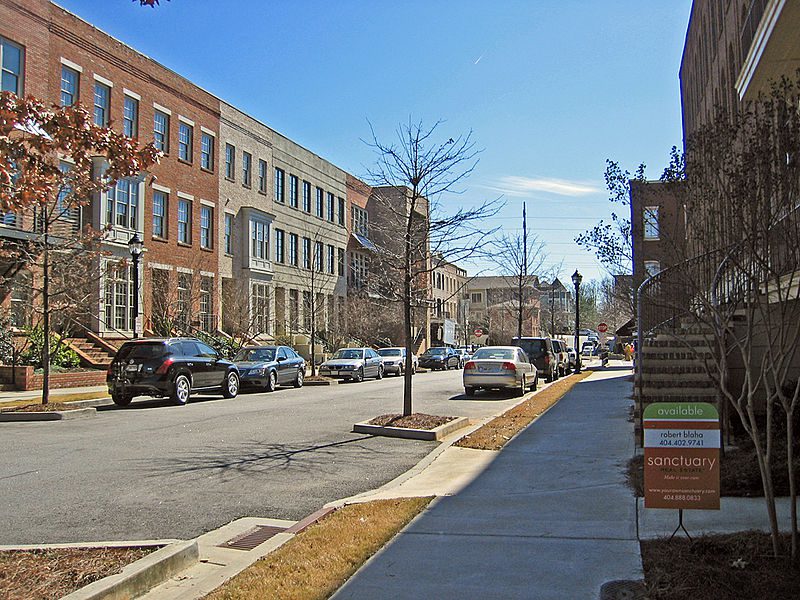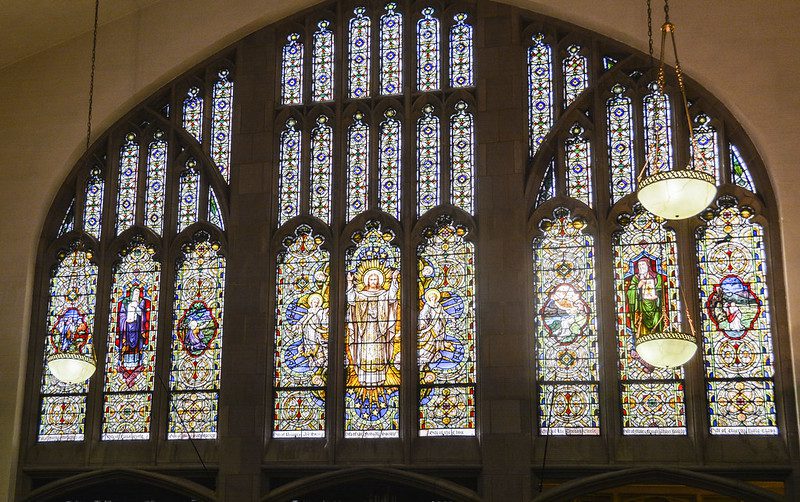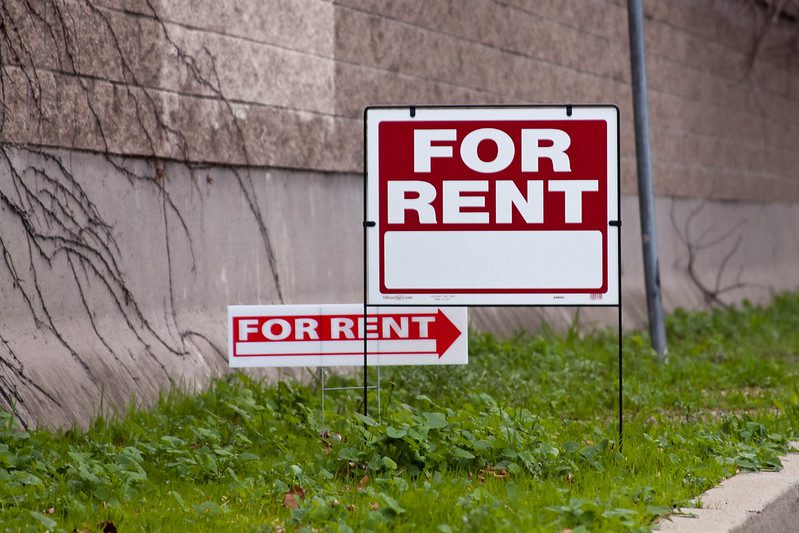In my last post I described an approach—centering on a tax credit for families to buy substandard houses in targeted neighborhoods, fix them up, and occupy them as owner-occupants for at least five years—that I believe would be far more effective than NSP, Project Rebuild, or anything like that as a way to actually revitalize neighborhoods.
The post triggered a thoughtful response from Mike Hodge of Nashville:
“How is gentrification dealt with? […] wouldn’t the end result of the proposed program be to raise property values (and taxes and rents) in the neighborhood? Wouldn’t people of modest income be priced out? Are there modifications to the program that might help maintain affordable housing in such neighborhoods? […] But gentrification seems to be the elephant in the room of any neighborhood development project.”
It’s a big issue. If property values in a neighborhood are significantly below the homes’ replacement cost, one goal of any serious neighborhood revitalization program should be to raise property values. Not the only goal, but an important one.
Low property values are the curse of urban neighborhoods. They discourage buyers who have good credit and can get mortgages because they don’t feel their investment will be rewarded. They discourage property owners from putting money in their properties because they don’t think they’ll ever get it back. They discourage people from rehabbing empty homes or building new homes on vacant lots (except with lots of government subsidy) because they can’t sell the house for what it costs them.
[RELATED: What Does Gentrification Really Mean?]
The only people who are attracted by low prices are predatory real estate investors, who aim to recoup their investment in three or four years from cash flow, and then walk. Finally, low property values are sign of low demand; they are a signal that people who can choose where they want to live have chosen not to live there.
Unless prices increase to the level where people start to believe that it is worth their time and money to buy in the neighborhood, to improve their properties, and to start fixing up vacant houses, the neighborhood is unlikely to thrive. And even if unlimited public subsidy money were available to fix up houses and build new ones, it would not be a substitute for the decisions of thousands of individuals to put their money into homes in a neighborhood. In any event, that’s academic; the money’s not there.
This is where we bump into the elephant. If house prices go up, what happens to low income residents who can’t afford rent and tax increases?
It’s actually two separate questions: first, what happens to the individuals and families who live in the area when house prices start to go up? And second, what happens to the neighborhood’s housing stock, and ultimately its social mix? A third question, which seems to preoccupy some people more than the first two, is what happens to what one might call the “social ownership” of the neighborhood. Each question needs to be addressed separately.
As far as families are concerned, I believe the principle that they should be protected from the impacts of rapid or steep housing cost increases is fundamental. No one should be forced to leave their home or neighborhood until or unless they want to. Ultimately, most homeowners will benefit from higher prices, if they can keep their homes long enough; many low-income senior citizen homeowners already benefit from property tax “circuit-breakers” that cap property taxes as a percent of income.
Cook County, Illinois, has adopted a number of tax relief programs to help homeowners in appreciating areas, and Philadelphia is considering similar actions. Tenants can be protected through different means, including carefully targeted rent control, requiring landlords to provide relocation assistance, enforcing laws barring landlord harassment, incentives to landlords to maintain affordable rents, and programs like Washington DC’s Tenant Right of First Refusal, which gives tenants the right to buy their building if the owner puts it on the market.
The second question is more complicated. As Peter Byrne of Georgetown Law writes, “the most negative effect of gentrification, the reduction in affordable housing, results primarily not from gentrification itself, but from the persistent failure of government to produce or secure affordable housing more generally.” Given that failure, preserving existing affordable housing in a gentrifying neighborhood should be a no-brainer. How much additional affordable housing should be created in such a neighborhood is more complicated, and would depend on the existing amount of permanent or long-term affordable housing in the neighborhood, the availability of affordable housing in other parts of the city and region, and the market price of housing in the city and region.
Where it makes sense, there are a variety of tools available, including inclusionary housing and land banking, as I discuss in my paper “Managing Neighborhood Change.” Keeping people from buying houses, or developers from building for the market, however, is counterproductive.
Finally, though, I am deeply skeptical about “social ownership” of any neighborhood by any racial, ethnic, social, or economic group. Neighborhoods in the United States are constantly changing, and the group (however defined) that lives in an area today is likely to have displaced some other group, which displaced a yet earlier group, and so forth as long as the neighborhood has been around. The specter of governmentally-enforced racial segregation is not such an ancient memory that we should seriously contemplate using any form of public power to create or enforce neighborhood entitlements, no matter for whom.
Whatever one does to prevent displacement or preserve affordable housing, though, it must be kept carefully distinct from the effort to build a stronger housing market that’s a key to neighborhood revitalization. Treating the two as an either-or proposition is in nobody’s interest.
Ed note: What is gentrification, anyway? Tell us your thoughts in this survey. And don’t miss Rick Jacobus’s contribution to this discussion.
(Photo by Brett VA CC BY)






This is a shameful apologia for privatization and increasing the strength of market forces in housing markets and in neighborhoods. The author focuses on demand to the exclusion of even thinking about the impacts of gentrification on displacement, let alone how rising housing costs might squeeze family budgets even if those families aren’t permanently displaced. It’s assumed, I’m guessing, that homeowners in the gentrifying neighborhood could get a HELOC to benefit from the rising price of the land beneath them. Either way, this kind of expansionist boosterism is exactly what caused the last foreclosure crisis, and likely what will cause the next one. Thanks so much for that, center-left housing advocates!
I do housing work in a radically under-priced housing market. The average house sold last year for $23K. It has devastated the existing home owners, and resulted in massive blight. I estimate owners in the neighborhood lost $300 million in equity in recent years. Our primary objective is to raise values as well as demand.
Yes, the pendulum can swing too far. Yet, in the only example of gentrification I’ve seen here in Memphis, at least the little-old-ladies on fixed incomes could cash out and get a subsidized apartment. That’s exactly what they did.
Overall I would say that depressed values hurt neighborhoods and low-income owners just as much as inflated values. There has to be a balance.
There may be situations where markets have abandoned neighborhoods where a fear of gentrification is misplaced. And private investment must play an important role in neighborhood improvement. But dismissing concerns about displacement universally ignores the real challenges that face many other communities. In theory the tools Mr. Mallach mentions do exist to control rents (e.g., rent control, first right of refusal laws (such as TOPA in DC)). But in many states legal barriers exist to accessing many of those tools. And in most places, political challenges face anyone who dares to question ‘free market’ solutions in these neoliberal times. Moreover, even in cities with the market controls that Mr. Mallach mentions, gentrification has resulted in widespread displacement and further marginalization of communities of color (e.g., TOPA didn’t do much to prevent African American displacement from NW DC). We need a far more critical analysis of markets and policies that purportedly serve working people. Without such analysis, today’s wave of TOD and other market driven development will wash away economically weakened residents in the most prime locations in our nation’s cities.
The whole history of the United States has evolved around an oppressive system of apartheid that has ghettoized millions of American citizens. Within those ghettos, they have built powerful communities. When those ghettos are destroyed and the people scattered, their communities are destroyed as well. This is true whether the policy of destruction of urban renewal or gentrification. “Social ownership” of neighborhoods arises from this process and is a life-giving creation. Its destruction causes illness and despair that radiate out throughout the entire society. Mallach’s argument, as presented here, does a disservice to the African-American community and others that have been the subjects of our brutal Apartheid.
Simon,
Your response is, to put it mildly, hyperbolic.
Can you honestly say with a straight face that Mr. Mallach’s proposal for a tax credit carefully targeted to boosting homeownership and renovation in devastated neighborhoods is equivalent to the actions of the liars and crooks who concocted subprime mortgages and shoved them down the throats of the working class? That’s ludicrous. It’s a comment with no sense of proportion.
Let’s hear YOUR proposals for distressed neighborhoods.
And by the way — why is your ire so strong for the “center left,” as you call it? Why are you fighting with your 80% friends — people who care about the same communities and people that you do but maybe have different proposals and ways and means — rather than with your 100% enemies, who despise people of color and cities and will do anything to hurt them politically?
I work for a non-profit in Nashville that helps neighborhood organizations in different parts of town. In almost all these areas, gentrification is happening and housing is becoming less affordable.
While I am pleased that Mr. Mallach thought enough of my earlier comment to write a blog post about the subject, I think he’s still missing my point.
In fact, it seems as though he’s creating a simplistic either-or argument. Either you embrace gentrification whole heartedly, or you are trying to stop development and keep property values artificially low. At one point, he says, “Keeping people from buying houses, or developers from building for the market, however, is counterproductive.” No one that I know is making that argument. I simply wanted to know if there were ways to maintain affordable housing in his proposed tax credit program to build a stronger housing market.
The answer that I hear at the close of his article is that affordable housing work must be kept separate and distinct from efforts to build a stronger housing market — without giving any reasons for this. That seems counter-productive – and wrong! Is there no way to have housing options for low-mod income residents as well as the more well-off?
I think that, for me, the key questions are:
1) What is the goal of neighborhood revitalization? Improving the housing stock–or the lives of low-moderate income residents? Removing low-income residents–or creating mixed-income neighborhoods?
2) If mixed-income neighborhoods are a goal, why do we not include maintaining affordable units in revitalization plans?
3) Why should public dollars through tax credits be used to increase income disparity in neighborhoods, when a revitalization plan could use LIHTC or other tools to insure affordability of some units?
I appreciate having this discussion – and hope that we can find more ways to maintain some affordable housing in gentrifying neighborhoods. Otherwise, we are just endorsing privately funded “urban renewal” that removes one group in favor of another.
Unfortunately, the housing market doesn’t know how to make things balance. It tends to cause greater and greater inequalities in housing. Those market forces, despite whatever “moderation” from regulation or “carefully targeted” policies are explosive. They’re what has caused the massive boom in urbanization over the past 150 years or so, but they’ve also done a lot of damage in the meantime.
Part of the damage done by markets are the economically devalued communities themselves. Low property values aren’t a result of being left out of capital accumulation: they’re the direct result of capital accumulation. (Neil Smith’s New Urban Frontiers lays this out very clearly.) And the market will fix that?
A view that neighborhoods are devastated just because of bad, mean people is simplistic. Carefulky targeting boosts in homeownership was part of what caused suburbanization, pulling capital investments out of cities and into suburbs. Carefully targeting boosts in homeownership was part of what caused the increase in home mortgages from the 50s onwards, and created the excess credit and houses that were necessary to build a secondary mortgage market, which, once market forces became stronger, turned into the basis for subprime mortgages. Subprime mortgages simultaneously were caused by and also caused an increase in demand for houses. Neoliberal solutions that want to increase demand and spur the market right now, like Mallach’s, are part and parcel of the same process. The center left who clings to these kinds of solutions aren’t my enemy; they’re just blindly helping move along the forces that are causing this whole mess.
It’s not my place to give a proposal. (On what authority can I or even Mallach say what people should do with their land and communities? Why aren’t things like this decided in any sort of rational democratic dialogue?) But if you want a proposal, fine: use eminent domain to turn vacant and dilapidated housing into public housing (like Lathrop Homes when Chicago Housing Authority was investing in it) or into community land trusts. That’s a good start.
I always find Mallach to be a smart and pragmatic analyst of policy and his proposal is simple, meshes well with many existing community development tools, and would be relatively easy to implement. The basic problem isn’t really with his proposal, it is with the framework. Many critics imagine a zero-sum game between existing and new residents. In many places they are definitely not wrong. The problem with policy that focuses exclusively on real estate values is that if it is not implemented alongside increases in private investment that yields higher incomes it basically only comes by shifting people around on the metropolitan map. This is effectively population churning that will inevitably benefit people who are well situated to take advantage of such policies (people with resources, people who have experience with housing markets, people who understand market and credit risk, in short, affluent people).
The foreclosure crisis should have made it abundantly clear that real estate market interventions absent other interventions will invite predation and set neighborhoods up for collapse.
I think Mr. Mallach’s idea has some merit and a different version of that has been applied here in Greensboro with mixed success – with the difference being that the house was remodeled prior to selling and requiring a five-year ownership minimum. This will work for some, but limits the marketability of the property. Time-based limitations are arbitrary and have no relationship to the market. Performance-based improvements would be better. How much improvement has the new owner made in five years such that it has moved the needle on an independent appraisal? Apply/allow the tax credit after 5 years and not up front. And do not make it dependent upon owner-occupied or not.
My neighborhood has fears of gentrification primarily due to a large expansion of the adjacent state University that is expanding literally “across the tracks.” This expansion largely removed transient and vacant housing that was in poor condition because it was held by speculators who knew the expansion was coming. Unfortunately, the City inadequately performed code enforcement during this period which brought market values down of adjacent properties. I absolutely think market values would have held steady had there been adequate enforcement of the minimum safe housing standards during this time. So it is not an either/or situation, but different neighborhoods will need different tools and some neighborhoods, like mine, need many different tools.